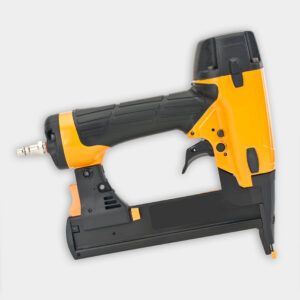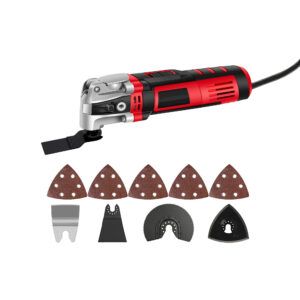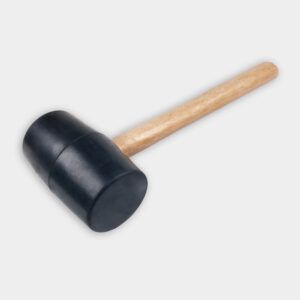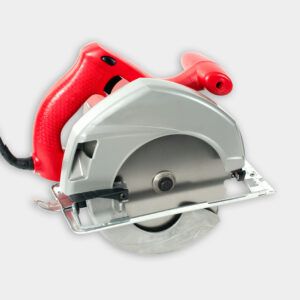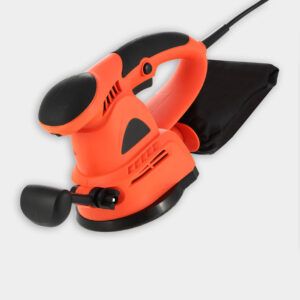We may be compensated if you purchase through links on our website. Our team is committed to delivering honest, objective, and independent reviews on home products and services.
Patching hardwood flooring is a skill that can save you time and money when you’re dealing with damaged or worn sections of your floors. This process involves carefully removing the damaged boards and seamlessly integrating new ones to maintain the floor’s overall appearance and integrity. In the video above, This Old House general contractor Tom Silva demonstrates the step-by-step process of patching a hardwood floor to achieve a cohesive look.
Understanding Hardwood Flooring Types
There are several different types of hardwood flooring. Strip flooring, for example, is a common type of hardwood flooring found in many homes. It often consists of narrow boards, usually 2 1/4 inches wide, made from various wood species such as oak, maple, or pine. This flooring style is known for its classic appearance and durability.
Most hardwood flooring uses a tongue-and-groove construction. This design allows the boards to interlock, creating a stable and secure floor surface. The tongue is a protruding edge on one side of the board, while the groove is a corresponding recess on the opposite side.
Tools and Materials Needed To Patch Hardwood Flooring
You’ll need the following tools and materials to patch your hardwood floors:
- Circular saw
- Finishing materials (stain, polyurethane)
- Nailer or stapler
- Oscillating multi-tool
- Random orbital sander
- Replacement hardwood boards
- Rubber mallet
- Wood glue
Acclimating the New Flooring To the Environment
To prevent future issues stemming from wood expansion or contraction, acclimate the new flooring to the room’s environment. Silva recommends purchasing the hardwood flooring about a week before installation and storing it in the room where you plan to install it. This allows the wood to adjust to the room’s temperature and humidity.
Removing Damaged Hardwood Boards
The first step in patching hardwood flooring is to remove the damaged boards without affecting the surrounding floor. Here’s how to do this:
- Using an oscillating multi-tool, carefully cut around the perimeter of the damaged boards. This tool allows for precise cuts without damaging adjacent boards.
- Be sure to set the depth of the cut to match the flooring’s thickness.
- Once you’ve made the cuts, use a pry bar or chisel to remove the damaged boards. Take care not to damage the surrounding flooring or the subfloor underneath.
Installing New Boards
Now that you’ve removed the damaged section, it’s time to install your new hardwood boards.
Preparing the Subfloor
Before installing new boards, inspect the subfloor for any damage or unevenness. Make any necessary repairs to create a stable foundation for the new flooring.
Cutting and Fitting New Boards
Here’s how to cut and fit your new boards to maintain aesthetic consistency while enhancing your flooring’s structural integrity:
- Measure the area where you plan to install your new boards.
- Cut the boards to fit precisely.
- For a seamless look, stagger the joints of the new boards to match the pattern of the existing floor.
Nailing or Stapling the Boards
Next, secure the new boards using a nailer or stapler. Modern tools like pneumatic nailers can make this process much faster and more efficient than traditional hand-nailing methods. Place nails or staples every 8–12 inches along each board for proper installation.
Dealing With Tight Spaces When Patching Flooring
When patching hardwood flooring, you may encounter areas where it’s challenging to fit full boards. These situations require special techniques to achieve a proper fit.
Creating a Rabbeted Joint
You can create a rabbeted joint when working on the last row of boards or in tight spaces where a full board won’t fit. To do this, use a circular saw to remove the lower part of the groove on the board so you can tip the board into place more easily.
Gluing and Face Nailing
In tight spaces where traditional nailing methods aren’t possible, you can use the following technique to create a strong bond:
- Apply wood glue to the tongue of the existing board, the subfloor, and the groove of the new board.
- Tip the modified board into place.
- Face-nail the modified board to secure it.
Additional Tips for a Seamless Patch of Your Hardwood Floor
Here are a few additional tips to help you achieve a professional-looking appearance:
- Feathering the patch: Feathering involves gradually diminishing the size of the patch to blend it more naturally with the existing floor. This technique can help create a visually appealing transition between the old and new boards.
- Selecting matching wood: Make sure the replacement boards match the existing floor’s wood species, grain pattern, and color. This will help the patched area blend with the surrounding flooring.
- Using a test board: Before cutting and installing your new boards, use a test board to check the fit. This will help you make any necessary adjustments before the final installation.
Finishing the Patched Hardwood Area
After installing your new boards, you can blend the patched area with the surrounding floor using the finishing touches below.
Sanding the Patch
Use a random orbital sander to level the newly installed boards with the existing floor. Start with a coarser grit (around 60) for initial leveling, then progress to finer grits (100–120) for a smooth finish. The goal is to create a smooth transition between the new and existing boards, making the patch virtually invisible.
Applying Finish
To match the patched area with the rest of the floor, apply a finish that complements the existing flooring as follows:
- For stained floors: Match the patched area with the existing stain as closely as possible before applying the protective topcoat.
- For unfinished wood: Apply multiple coats of polyurethane to the patched area.
In either case, allow adequate drying time between coats for a durable and long-lasting finish.
Maintaining Your Hardwood Floors
Once the patch is complete, maintaining your hardwood floors will help preserve their beauty and longevity. Consider the following maintenance tips:
- Maintain consistent humidity levels in your home to prevent the wood from expanding or contracting. Use a humidifier in dry seasons and an air conditioner or dehumidifier in humid seasons.
- Place felt pads under furniture legs to prevent scratches and dents. This is especially important for heavy furniture and items you frequently move.
- Sweep or vacuum your floors regularly to remove dust and debris. This prevents scratches and maintains the floor’s finish.
When To Consult a Flooring Professional To Patch Your Floors
While patching hardwood floors can be a DIY project, the following situations may warrant professional assistance:
- Complex patterns: Floors with intricate patterns or inlays may require specialized skills to patch seamlessly.
- Extensive damage: If a large area of your floor is damaged, consulting a professional may be more practical.
- Structural issues: A professional may be better equipped to address damage to the subfloor or underlying structure.
